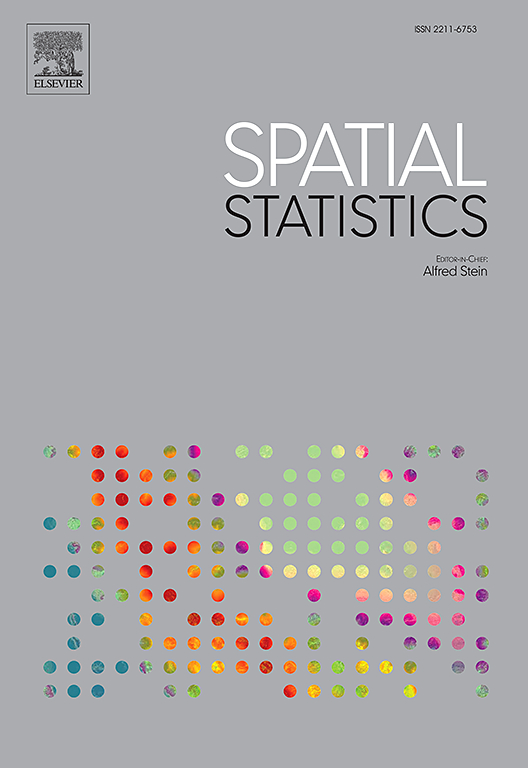Uncovering hidden alignments in two-dimensional point fields
IF 2.5
2区 数学
Q3 GEOSCIENCES, MULTIDISCIPLINARY
引用次数: 0
Abstract
The problem of mapping hidden alignments of points in data sets of two-dimensional points is of significant interest in many geoscience disciplines. In this paper, we revisit this issue and provide a new algorithm, insights, and results. The statistical significance of alignments is assessed by using percentile confidence intervals estimated by a Monte Carlo procedure in which important issues, such as the shape of the geometric support and the possible non-homogeneity of the point density (i.e., clustering effects), have been considered. The procedure is not limited to the simplest case of occurrence and the chance of triads (alignments of three points in a plane) but has been extended to k-ads with k arbitrarily large. The important issue of scale, when searching for point alignments, has also been taken into account. Case studies using synthetic and real data sets are provided to illustrate the methodology and the claims.
揭示二维点域中的隐藏排列
绘制二维点数据集中点的隐藏排列图是许多地球科学学科非常感兴趣的问题。在本文中,我们重新审视了这一问题,并提供了一种新的算法、见解和结果。通过使用蒙特卡罗程序估算的百分位数置信区间来评估排列的统计意义,其中考虑了一些重要问题,如几何支撑的形状和点密度可能存在的非均质性(即聚类效应)。该程序并不局限于最简单的三元组(平面上三个点的排列)出现和出现的几率,而是扩展到了 k 值任意大的 k 元组。在搜索点排列时,还考虑到了重要的规模问题。我们提供了使用合成数据集和真实数据集的案例研究,以说明我们的方法和主张。
本文章由计算机程序翻译,如有差异,请以英文原文为准。
求助全文
约1分钟内获得全文
求助全文
来源期刊

Spatial Statistics
GEOSCIENCES, MULTIDISCIPLINARY-MATHEMATICS, INTERDISCIPLINARY APPLICATIONS
CiteScore
4.00
自引率
21.70%
发文量
89
审稿时长
55 days
期刊介绍:
Spatial Statistics publishes articles on the theory and application of spatial and spatio-temporal statistics. It favours manuscripts that present theory generated by new applications, or in which new theory is applied to an important practical case. A purely theoretical study will only rarely be accepted. Pure case studies without methodological development are not acceptable for publication.
Spatial statistics concerns the quantitative analysis of spatial and spatio-temporal data, including their statistical dependencies, accuracy and uncertainties. Methodology for spatial statistics is typically found in probability theory, stochastic modelling and mathematical statistics as well as in information science. Spatial statistics is used in mapping, assessing spatial data quality, sampling design optimisation, modelling of dependence structures, and drawing of valid inference from a limited set of spatio-temporal data.
 求助内容:
求助内容: 应助结果提醒方式:
应助结果提醒方式:


